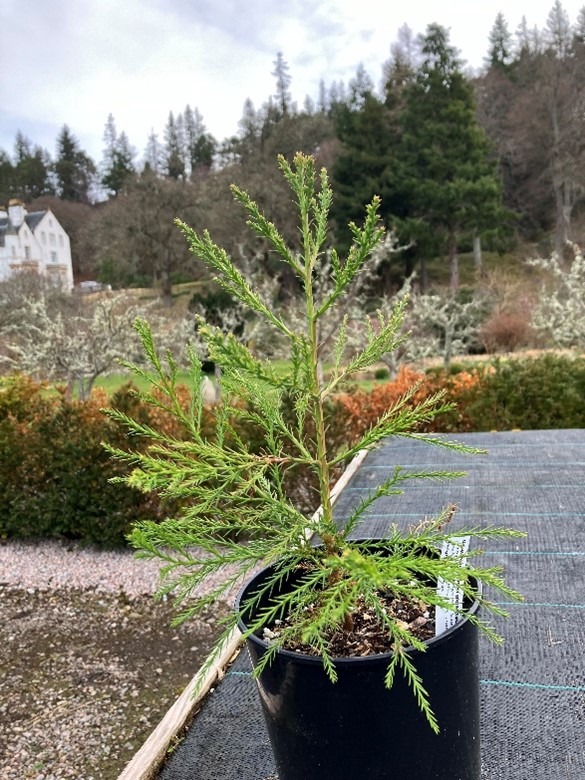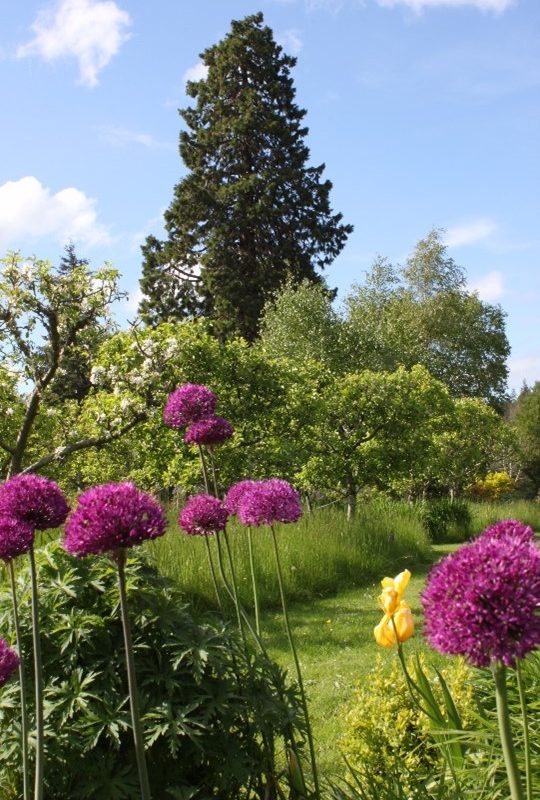There are now more specimens here than in the Golden State where forest fires and drought have put the trees’ future in jeopardy. Fewer than 80,000 giant redwoods are thought to be standing on their original range on the western slopes of the Sierra Nevada where they are now listed as endangered. This compares with an estimated 500,000 in Britain including the magnificent tree in the Logie House gardens.
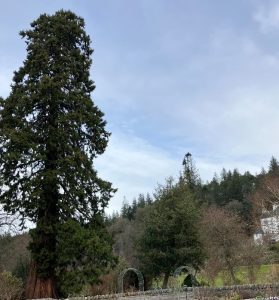
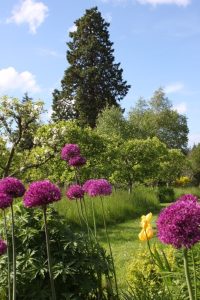
The earliest recorded introduction into the UK is 1853. William Lobb, seasoned plant collector for the Veitch nurseries in London, visited San Francisco in 1852 where he had heard tales of the mammoth conifers. He knew that these enormous trees would trigger an exciting craze in the highly competitive British horticultural circles so he was keen to see the trees and be able to collect seed, shoots and seedlings to grow in the UK. He found around 90 towering trees and reported that a felled tree had measured 300’ with a diameter of over 29’ near its base. A section of this hollowed out (and carpeted) slice of trunk could comfortably accommodate a piano with an audience of 40.
Within two years thousands of saplings were being snatched up by wealthy Victorians to adorn great British estates. The larger-than-life conifer, so symbolic of the vast American wilderness, suddenly became a status symbol in Britain
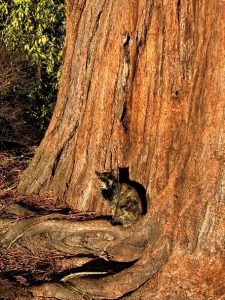
The UK’s oldest giant redwoods are thought to be at Benmore Botanic Garden in Argyll but they are not the tallest trees – that honour goes to the coastal redwood, Sequoia sempervirens – but their trunks are fatter, making them bigger overall. The UK’s largest specimen, standing at nearly 55 metres tall, is found at Center Parcs Longleat Forest but this is still small compared with the oldest US trees which can reach 90 metres tall and live for 30,000 years. The trees which were measured for the study were mostly found to be growing at rates close to those in California.
“For these UK trees, the next 40 metres will take another 1500 years,” said Professor Mat Disney of University College London, senior author of the study. “To get there, you’ve got to make sure you’re not struck by lightning, cut down or blown over.”
Measurements were taken of trees at Wakehurst botanical gardens in West Sussex, Havering Country Park in Essex and Benmore.

The red spongey bark of the Sequoidendron giganteum is equally as magnificent as the rest of the tree. You can grab chunks of it and think it will peel off, but it is thick and solid, and at one with the tree often developing deep holes that are used by nesting and roosting birds.
We have had success growing Wellingtonias from seed collected from the giant at Logie. These have been planted in arboreta and gardens across Scotland and will, hopefully, continue to thrive for thousands of years!
Be sure to visit the Logie House Gardens giant redwoods when you're next visiting!
